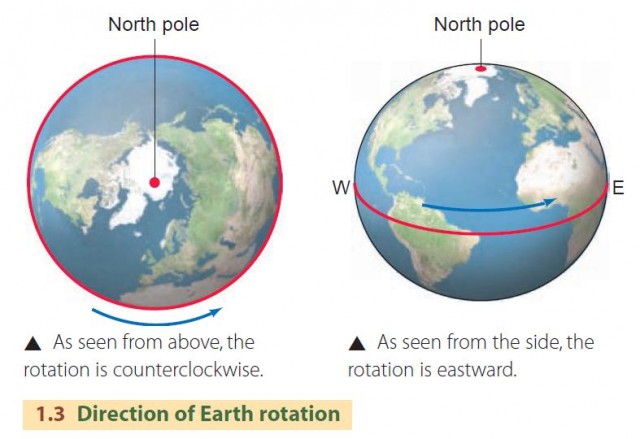Earth Rotation
The Earth spins slowly on its axis —an imaginary straight line through its center and poles—a motion we refer to as rotation. We define a solar day by one complete rotation, and for centuries we have chosen to divide the solar day into exactly 24 hours. The North and South Poles are defined as the two points on the Earth's surface where the axis of rotation emerges. The direction of the Earth's rotation is shown in Figure 1.3.
The Earth's rotation is important for three reasons. First, the axis of rotation serves as a reference in setting up the geographic grid of latitude and longitude, which we will discuss later in the chapter. Second, it provides the day as a convenient measure of the passage of time, with the day in turn divided into hours, minutes, and seconds. Third, it has important effects on the physical and life processes on Earth.

ENVIRONMENTAL EFFECTS OF EARTH ROTATION
All walks of life on the planet's surface are governed by the daily rhythms of the Sun. Green plants receive and store solar energy during the day and consume some of it at night. Among animals, some are active during the day, others at night. The day–night cycle also creates the daily air temperature cycle that is observed in most places on the Earth.
The directions of large motions of the atmosphere and oceans are also affected, as the turning of the planet makes their paths curve. As we will see in Chapter 5 , weather systems and ocean currents respond to this phenomenon, which is known as the Coriolis effect.
Finally, the Earth's rotation combined with the Moon's gravitational pull on the planet creates the rhythmic rise and fall of the ocean surface that we know as the tides. The ebb and flow of tidal currents is a lifegiving pulse for many plants and animals and provides a clock regulating many daily human activities in the coastal zone. When we examine the tide and its currents further in Chapter 16 , we will see that the Sun also has an influence on the tides.